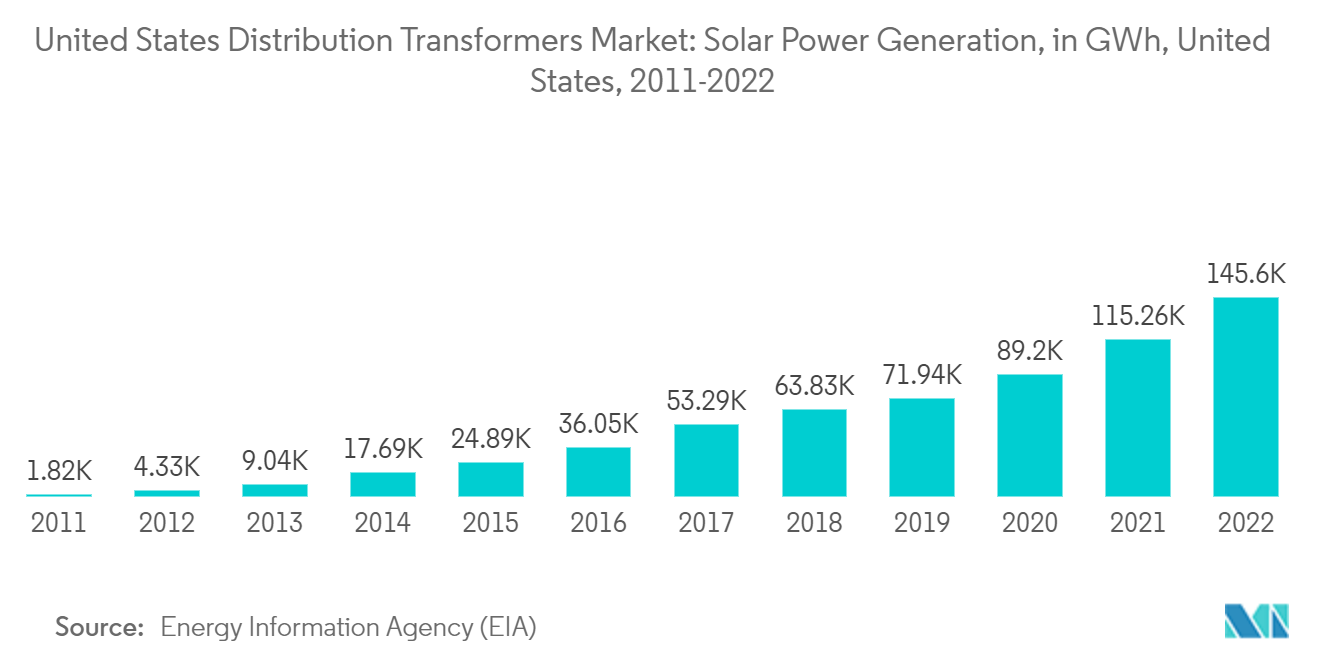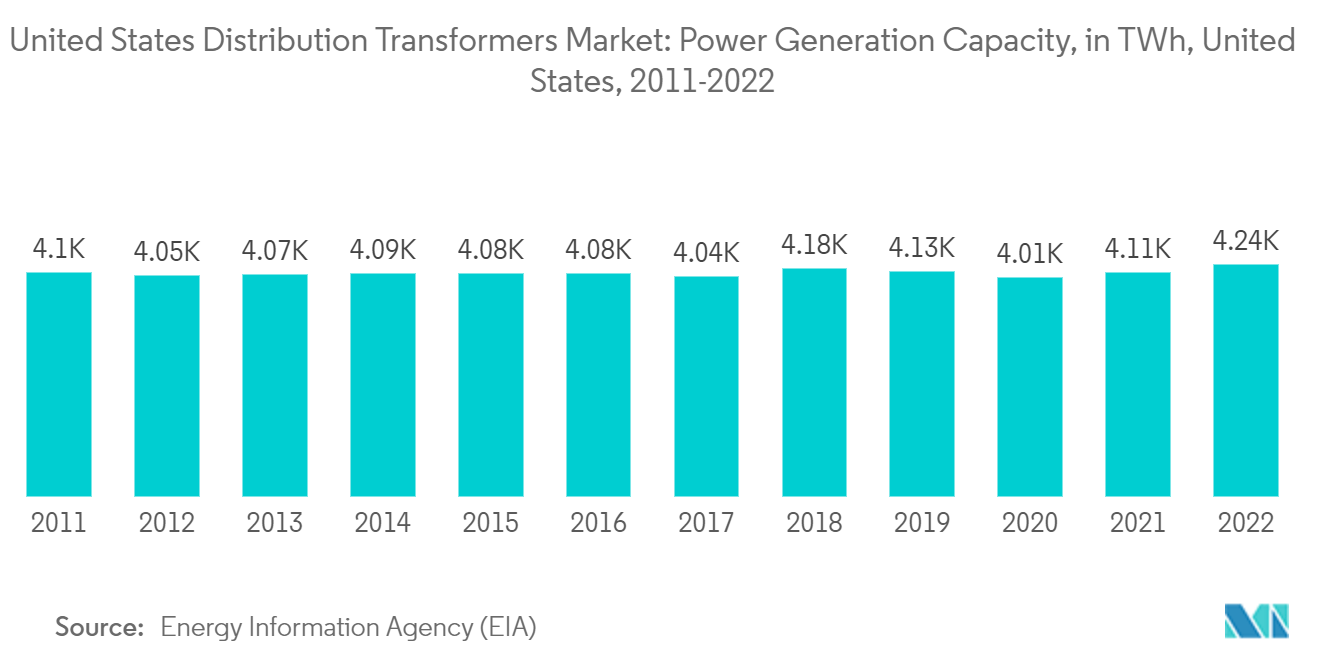Market Trends of US Distribution Transformer Industry
High Voltage Segment Expected to Dominate the Market
- High voltage distribution transformer is an essential asset in the first and last step of the grid. It is used to convert high voltage transmitted to low voltage to be used by industries, infrastructural, and residential complexes. In addition, as decentralized generated electricity increases through renewable energy sources, a high-voltage distribution transformer is used to supply generated electricity to the grid.
- High voltage distribution transformers are also used in receiving voltage from high voltage levels and distributing it to lower voltage substations or industries with enormous energy demands.
- According to the Energy Information Administration (EIA), solar power net generation in the United States increased significantly from 36.05 billion kilowatt-hours in 2016 to about 145,598 gigawatt-hours in 2022, which will directly aid the high voltage distribution transformer market.
- Furthermore, according to the EIA, small-scale solar power generation in the country increased from 4.09 million megawatt-hours (MWh) in March 2021 to about 5.03 MWh in March 2022, primarily distributed solar generation.
- According to the Solar Energy Industries Association, as of May 2022, there was around 73 gigawatt of large-scale under construction and development and about 82 gigawatts of major solar projects.
- With all these advantages and increased investments, theHigh-Voltage segment is anticipated to dominate the market during the forecast period.

Increasing Investments and Efforts to Modernize Country's Grid expected to Drive the Market
- As of 2022, the United States was the second-largest energy consumer globally and, consequently, has one of the world's largest Transmission and Distribution (T&D) networks. Distribution transformers are one of the most critical assets in the electricity T&D network, used to step down power voltages to supply electricity to consumers.
- During 2022, the United States generated nearly 4,243 TWh of electricity, accounting for almost 19% of global generation. During 2012-2022, electricity generation registered a steady CAGR of 0.47%. Additionally, in 2022, electricity generation increased by 3.11% year-on-year.
- Hence, distribution transformers are fundamental for the efficient distribution of electricity across the bulk-power system of the United States, which supplies electricity to residential, commercial, and industrial customers, as well as the power required to support military and defense installations, including bases, arsenals, and laboratories.
- However, the country's grid infrastructure is relatively old, and the current generation of T&D systems installed in the United States is aging. Most have operated for over 25 years, making them unsuitable for renewable energy integration and accommodating EV charging systems. These distribution transformers must be replaced/upgraded with smart systems and technology-enabled distribution transformers to improve supply reliability.
- Additionally, due to this rapid rise in renewable generation, grid stability has become a significant issue in countries with a high level of renewable integration in their grids. Nearly 66% of the installed renewable energy capacity in the United States is from wind and solar, which are inherently variable energy sources. Due to variable power output, traditional T&D systems are unsuitable for renewable energy transmission and distribution and require upgradation or retrofitting with smart grid technologies, including advanced smart systems suitable for interaction with renewable energies and ICT.
- The US Government identified the problem and outlined a strategy for modernizing the country's grid system. In April 2021, the US government launched a federal program, Building a Better Grid Initiative, under the Department of Energy (DOE) to expand and modernize the country's electricity grids. Under this program, the DOE introduced new financial packages and tools to help build high-voltage electric transmission lines. The program also identifies 20 major T&D projects currently in the pipeline or under construction, and the DOE is expected to collaborate with the Department of Transportation to secure existing rights-of-way to facilitate the siting of transmission lines.
- Under this program, in May 2022, the DOE issued a Request for Information (RFI) seeking public input on the structure and allocations made under the USD 2.5 billion Transmission Facilitation Program (TFP). According to the DOE, this is expected to be the first installment of a USD 20 billion package under the Building a Better Grid Initiative. The program will provide federal financial support for large-scale T&D projects.
- Under the TFP, the DOE is authorized to secure a loan of up to USD 2.5 billion to assist the construction of new and upgraded high-capacity transmission lines through three financing tools: loans from DOE, DOE participation in public-private partnerships, and capacity contracts with eligible projects in which DOE would serve as an anchor customer. The DOE is also legally obliged to purchase up to 50% of the maximum capacity of the transmission line for up to 40 years.
- Based on the above instances, it can be easily deduced that the country's T&D network is undergoing huge changes, and heavy investments are pouring into the sector. Investments are coming in from the private and public sectors, and government investments are from the state and federal levels. Such large investments are expected to improve the country's grid, which is expected to be a major factor driving the demand for distribution transformers during the forecast period.

